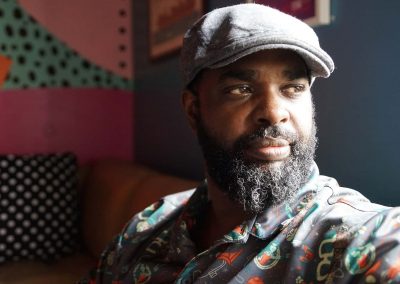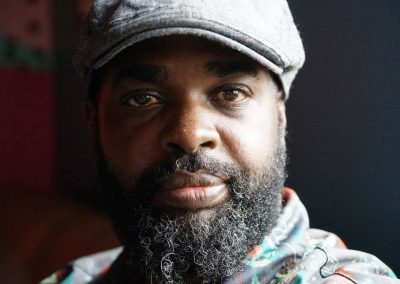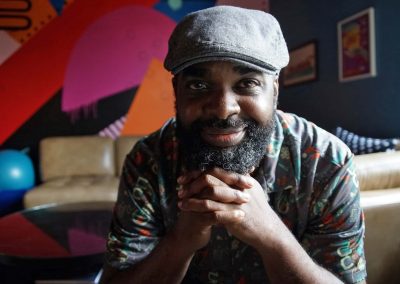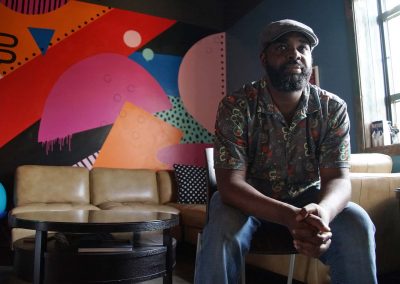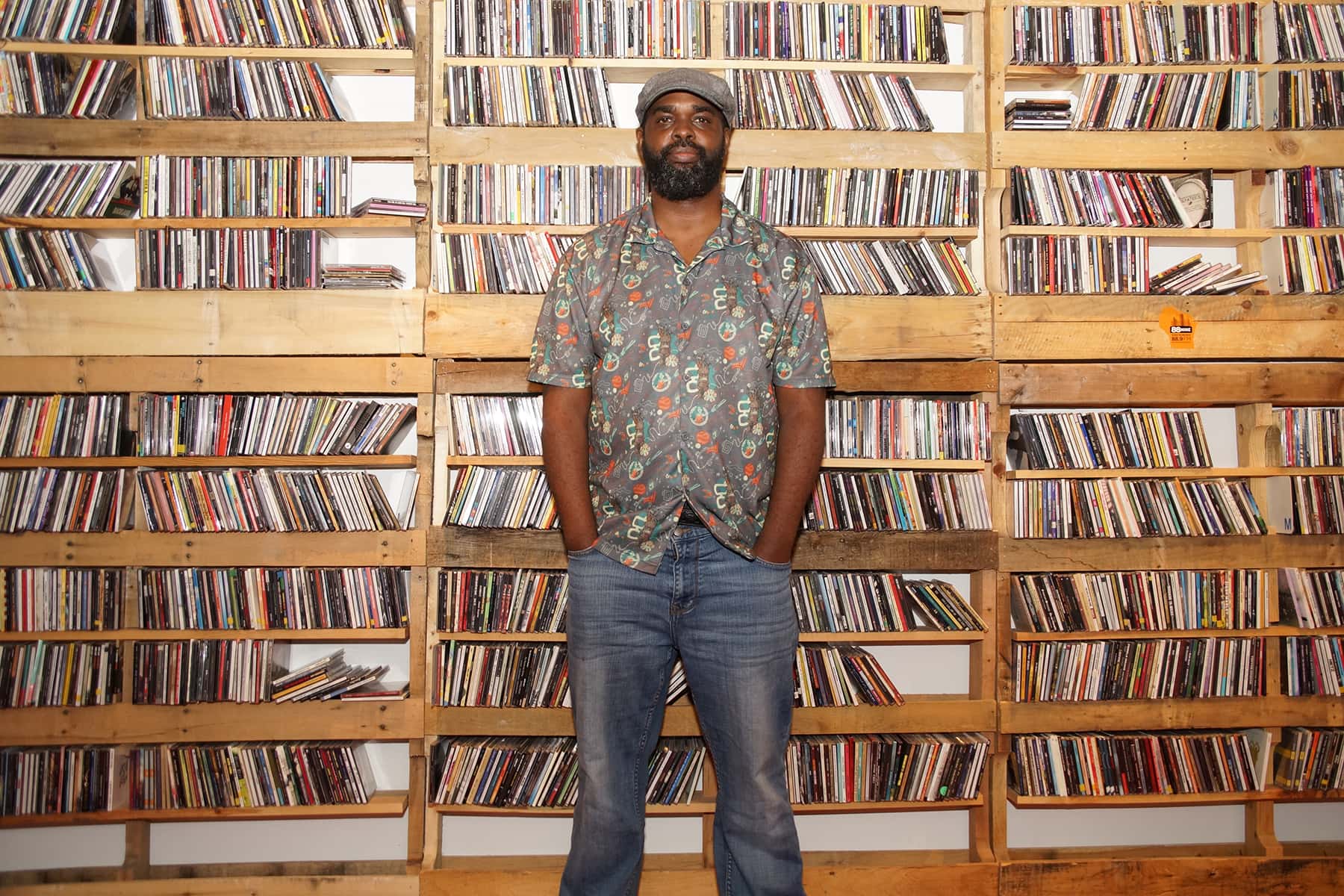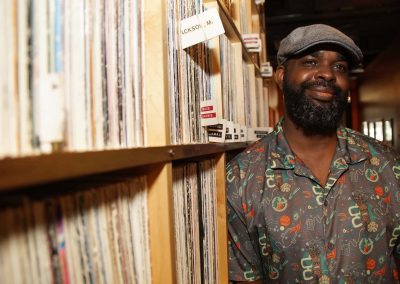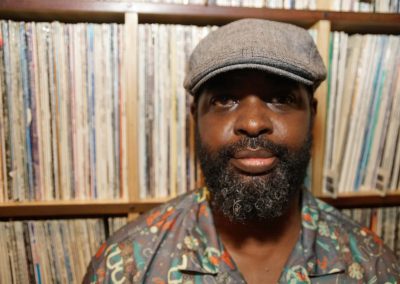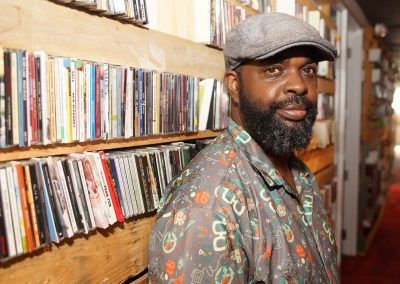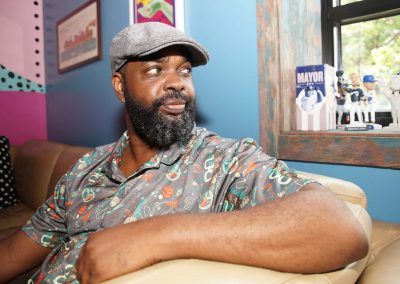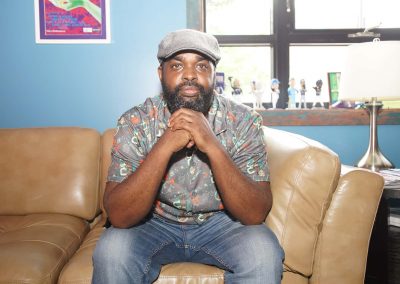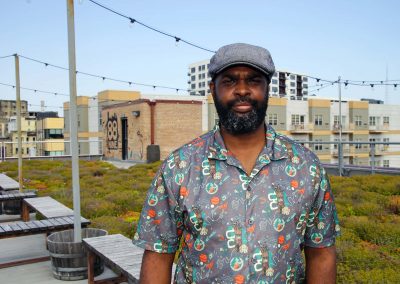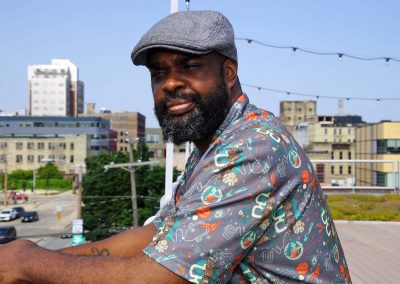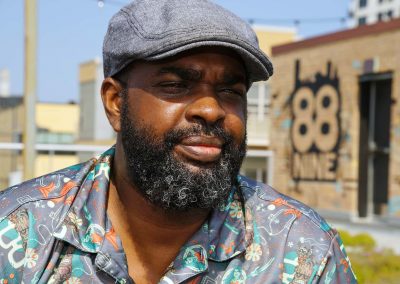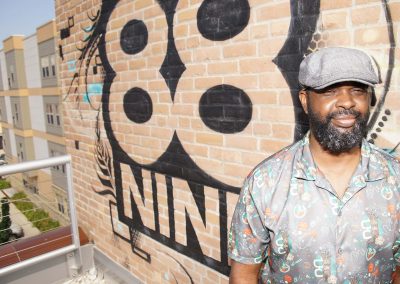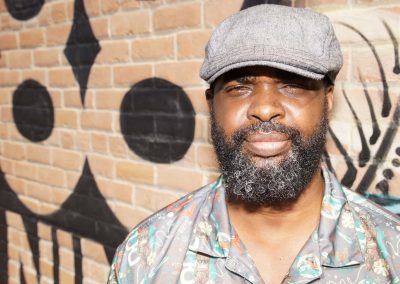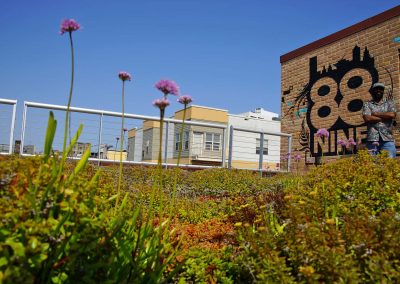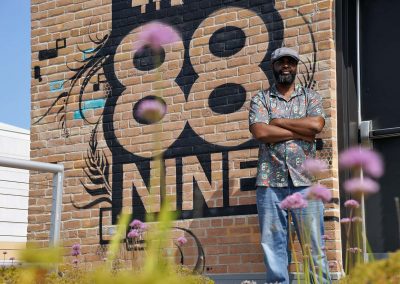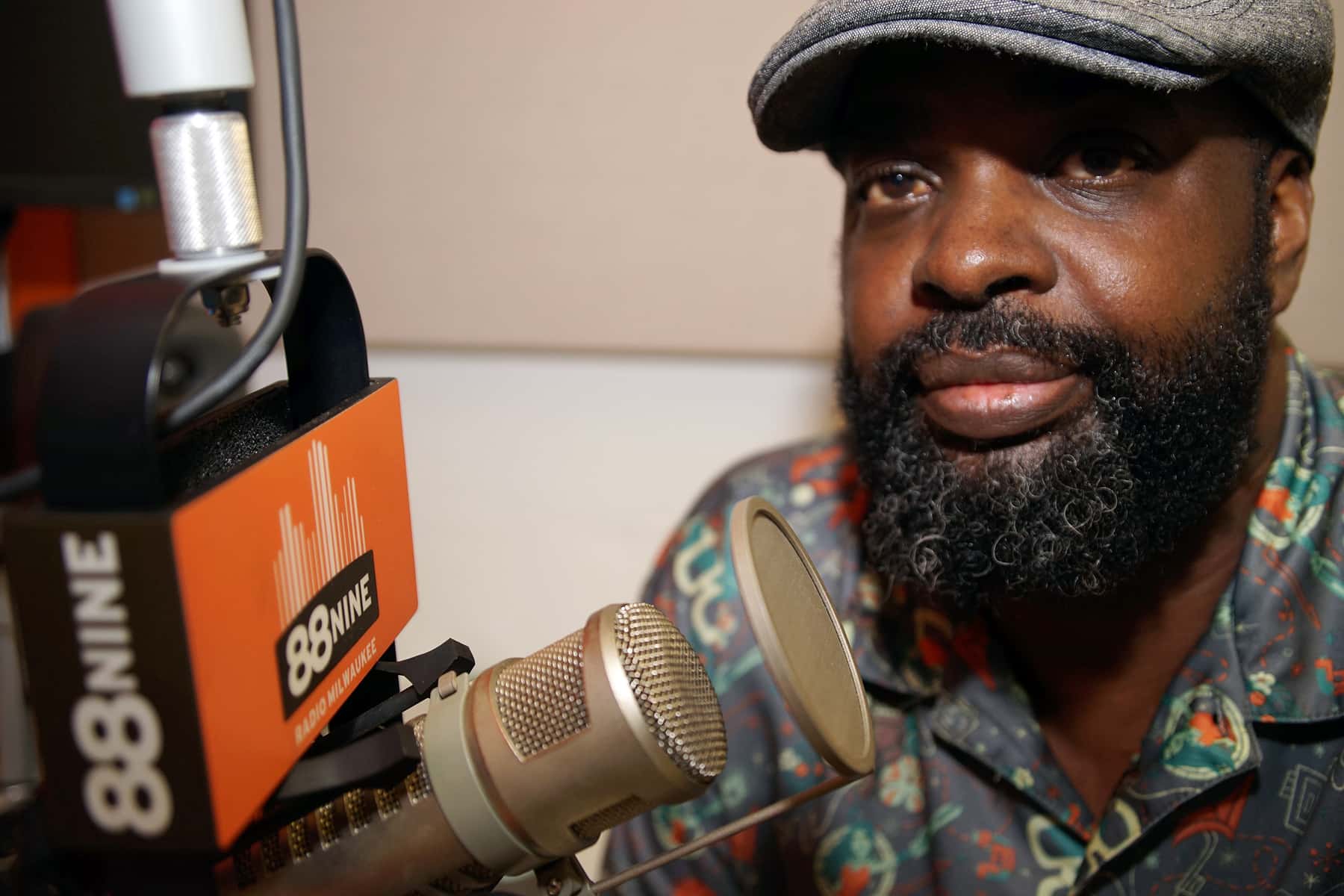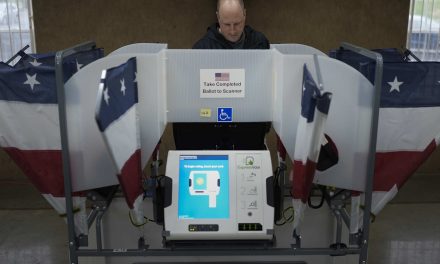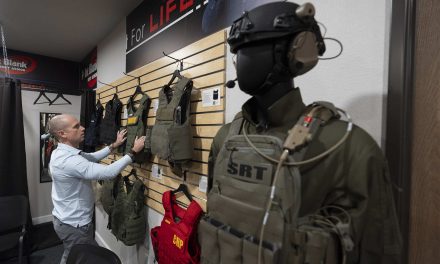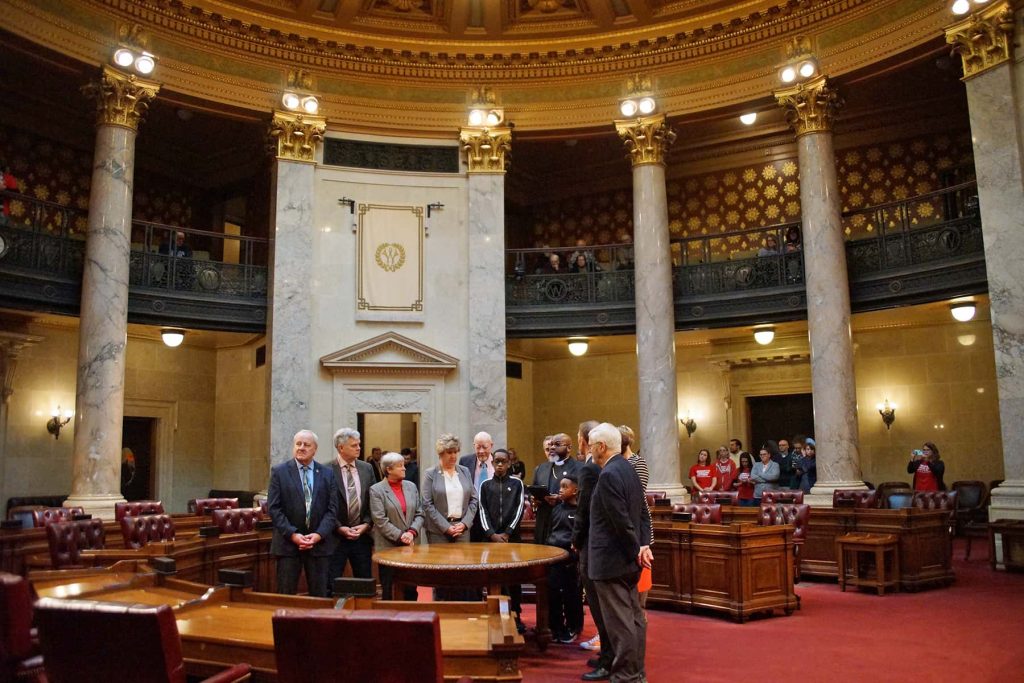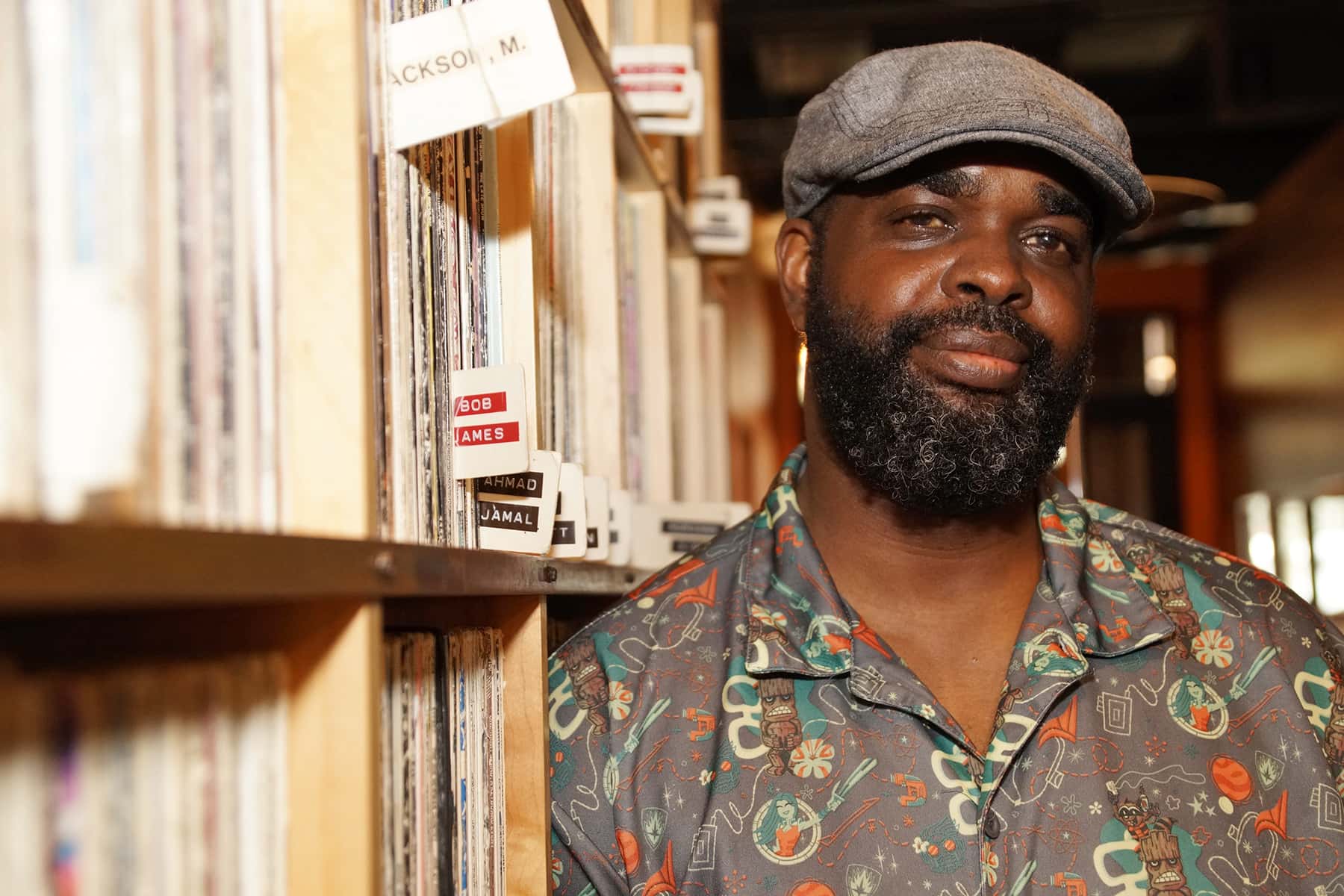
His resume is eclectic: B.A. Architecture from Howard University, U.S. Army Reserves Captain, architect in Minneapolis and, of course, host of the popular Rhythm Lab and This Bites segments on 88Nine Radio Milwaukee, as well as its current Director of Digital of Digital Strategy and Innovation.
Beyond job titles, professional accomplishments, and personal achievements, however, I wanted to know what else makes Tarik Moody tick, and explore his epic love for Milwaukee. So I asked him what three words he would include on his business card other than his official positions. Without blinking, he responded: Creator, Connector, Innovator. Then he presented a call to action for Milwaukee.
Tarik Moody, In His Own Words
I sometimes feel like, or want to be like, Clarence Avant, who is known as the “Black Godfather.” A documentary just came out about him. You should see it.
It’s simple: I like to help people. For example, I’m writing a story for 88Nine right now about an African American teenager who works at Ardent. I told him that I wanted to connect him with African American chefs that could help and give him opportunities he doesn’t know about yet. I also like to connect musicians with investors. “You should know each other,” I tell them. They can take it or leave it, of course, but at least I’ve brought the two together. I’m all about bringing people together.
Avant had two record labels, his own radio station and much more, and between the 1960s and 1990s, he was a mentor for many young African American people, especially in the music industry but even beyond. He got people in the room, showed them their worth and value. He put them in spaces where they normally weren’t. People like singer Bill Withers and Hank Aaron – he got him his first endorsement with Coca Cola. I think I’m like him, just without as much money.
Because I’ve had a passion for technology since I was young, it’s a focus of my connections. Milwaukee keeps saying that they want to be a major tech hub – blah, blah, blah – but people who look like me aren’t represented in that story yet. I want to address that disparity. So I’ve created things like Hackathons to show African American youth that there are people who look like them in technology fields, not just the stereotypical privileged techies who went to MIT. You’ve heard of the phrase “Representation matters.” Well, it does matter.
I also helped coordinate a Teen Jam at the Mitchell Street Library. We had video games, green screens where kids could experiment, presentations to parents about technology opportunities for their young people. It’s things like this that go a long way to getting kids excited about tech outside of school. And this October 4 and 5, I’m bringing back the Fall Experiment. We’re planning an immersive tech, gaming, art, and music experience with things like career panels, speakers about diversity and representation in the industry, and resources on entrepreneurship.
When “Black Panther” was released, all of a sudden, people saw themselves represented on the big screen and wanted to get involved in digital media and film. There was even a Wakandacon in Chicago. I want youth to know that tech is going to affect their lives and that they have the power to change how it affects them in the future.
Speaking of representation, I’ve played tennis for twenty years. People used to ask me, as a black man, “Why are you playing tennis?” Then Venus and Serena Williams came along – and the whole perception turned around about who should be playing tennis. So another big message for youth is this: You can be more than a consumer – of technology, of sports – and become part of the ecosystem.
But becoming part of the ecosystem has to be more than coding. People keep pushing coding, coding, coding, as if all a kid needs to succeed in technology is coding. Just give them coding, they say, and that will change their lives. But I’m not a big fan of that approach. These are little kids after all. They don’t need to know how to code yet. However, we could say, “Hey, you like to play Madden or watch this kind of movie. We see that. Well, here are some things you could do later.” Then, their brains start ticking. And then, maybe, they might want to learn how to code or do 3-D graphics or whatever. If we explain things in a respectful way and meet kids where they are – with their smartphones, their games, their music, their movies – then we’ll have greater success getting them excited.
That’s what I’m doing as the new Director of Digital Strategy and Innovation. Because our mission at 88Nine is to be a community outlet and a beacon for positivity, I have to ask, “How can we create content and an experience that serves what people want?” It’s a “big data” strategy just like Amazon or any big company will undertake, just on a smaller, non-profit scale. We’re doing this partly because radio is considered a “legacy media.” With so many other media options available now, we need to discover how not to become irrelevant. We can’t be just a radio station anymore.
What I do is look at the numbers to discover more ways to attract new members and listeners. First, though, I have to find out what attracts them to begin with. Is it just our music or is it also stories on the website? What makes people donate? How are they engaging on our social media? I look for trends and correlations between those and, say, the time of day, the release of a particular story or song. I look not only at our listeners but our clients and underwriters. What can we be doing that will get more people to know about us?
Part of the answer is that everyone needs to be included. While our listenership “sweet spot” is the 25 to 34-year-old demographic, there are whole communities of listeners not being served for whatever reason. How can we tap into younger listeners, for instance? We have to ask them what piques their interests, their passions, and create content that’s genuine. We can’t do it with any fakeness and definitely not top-down by imposing on our potential audience things we think they should be experiencing.
In all of this, I’m inspired by people like Jasmine Crowe from Atlanta, whose Goodr app has been able to redirect thousands of pounds of food waste from restaurants to feed the homeless. She saw a need and met it – then got mad investment from her city. Milwaukee needs more African American start-ups like hers. And investment. I want to say to the city, “If you want to be leading edge in something like how to handle food waste and homelessness, then here: look no further than Jasmine Crow for an example. Here’s your model. Take it and run.” I think the city would do good and look good. If you want to lead by tackling segregation, find your models and run. Just do it. Yes, we have to look to homegrown talent, of course, but we also have to import good ideas, then invest in them.
It was in Atlanta that Mayor Maynard Jackson helped plant the seed for what Atlanta looks like today. He told banks in Atlanta that they had to have at least one African American on their board to help ensure the creation and sustainability of a strong black middle class. Of course, they all said, “It’s impossible. We don’t have any.” Jackson was determined and enterprising, and eventually they all had African American board members. Fast forward and now Atlanta is the tech capital of the south. Jackson said, “This is what I want to see and got it done.”
I want Milwaukee to see its potential. But it can’t sugarcoat things and brush them under the rug. My level of frustration rises, however, when the money doesn’t come in. It’s nice to say, “Look at the Sherman Phoenix and how we invested some money into that. Or the Bronzeville Collective. Look at the good we’re doing.” But a Sherman Phoenix or Bronzeville Collective in Atlanta would get so much more support. Milwaukee has to invest in people of color. How else to be a leader in tackling segregation – another thing the city talks so much about? Stop talking about it and open up your pocketbooks. Help grow assets like the Phoenix or the Collective. Develop them. Mentor them. Develop new ones.
I love this city and I love, as a former architect, witnessing the evolution of cities, which are ecosystems, living entities. Sometimes for evolution to happen, however, we have to go back to the drawing board. Imagine, for a minute, a small group of people who believed in the impossible, with a mindset of transformation, who said, “Let’s go for it!”
© Photo
Lee Matz

